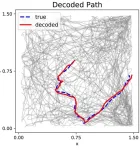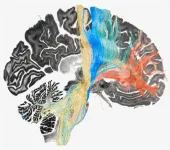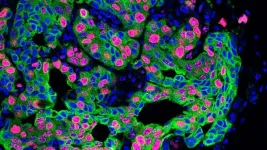(Press-News.org) New Haven, Conn. — Luke Skywalker’s childhood might have been slightly less harsh if he’d grown up on a more temperate Tatooine — like the ones identified in a new, Yale-led study.
According to the study’s authors, there are more climate-friendly planets in binary star systems — in other words, those with two suns — than previously known. And, they say, it may be a sign that, at least in some ways, the universe leans in the direction of orderly alignment rather than chaotic misalignment.
For the study, the researchers looked at planets in binary star systems — systems where individual planets orbit around a host star, with a second star, located nearby, that orbits the whole system. (The fictional desert planet Tatooine, from the “Star Wars” films, is in a binary star system.)
“We show, for the first time, that there is an unexpected pile-up of systems where everything is aligned,” said Malena Rice, an assistant professor of astronomy in the Yale Faculty of Arts and Sciences and lead author of the new study, which was published Feb. 22 in The Astronomical Journal. “The planets orbit precisely in the same direction that the first star rotates, and the second star orbits that system on the same plane as the planets.”
Rice’s team used a variety of sources, including the Gaia DR3 catalogue of high-precision stellar astrometry, the NASA Exoplanet Archive’s Planetary Systems Composite Parameters table, and the TEPCat catalogue of exoplanet spin-orbit angle measurements, to create 3D geometries of planets in binary star systems.
The researchers found that nine of the 40 systems they studied had “perfect” alignment.
“It could be an indication that planetary systems like to push toward an orderly configuration,” Rice said. “This is also good news for life forming in those systems. Stellar companions that are aligned differently can wreak havoc on planetary systems, toppling them over or flash heating planets over time.”
And just how would the world look on a more temperate Tatooine?
During some seasons of the year, it would be daytime continuously, with one star lighting up one side of the planet, while the other star was lighting the other half of the planet. But that sunlight would not always be blazing hot, because one of the stars would be much farther away.
In other seasons of the year, both suns would light up the same side of the planet, with one sun appearing much larger than the other.
Rice will give a presentation on the study in March at the Extreme Solar Systems conference in New Zealand.
Co-authors of the study are Konstantin Gerbig, a Yale Ph.D. student in astrophysics, and Andrew Vanderburg, an assistant professor of physics at MIT.
The research was funded, in part, by the Heising-Simons Foundation and the 51 Pegasi b Fellowship program.
END
A new beginning: The search for more temperate Tatooines
2024-02-22
ELSE PRESS RELEASES FROM THIS DATE:
Moffitt study highlights urgent need to address impact of extreme weather events on cancer survivorship
2024-02-22
TAMPA, Fla. — Hurricanes and other extreme weather events pose immediate threats to life and property and have long-lasting impacts on health outcomes, particularly for cancer survivors. In a mini-review published today in Cancer Epidemiology, Biomarkers & Prevention, a journal from the American Association for Cancer Research, Moffitt Cancer Center researchers shed light on the significant gaps in understanding and addressing the effects of hurricanes and extreme weather events on biological, psychosocial and clinical outcomes among cancer survivors.
Researchers ...
Scientists can tell where a mouse is looking and located based on its neural activity
2024-02-22
Researchers have paired a deep learning model with experimental data to “decode” mouse neural activity. Using the method, they can accurately determine where a mouse is located within an open environment and which direction it is facing just by looking at its neural firing patterns. Being able to decode neural activity could provide insight into the function and behavior of individual neurons or even entire brain regions. These findings, publishing February 22 in Biophysical Journal, could also inform the design of intelligent machines that currently ...
Artificial intelligence matches or outperforms human specialists in retina and glaucoma management, Mount Sinai study finds
2024-02-22
A large language model (LLM) artificial intelligence (AI) system can match, or in some cases outperform, human ophthalmologists in the diagnosis and treatment of patients with glaucoma and retina disease, according to research from New York Eye and Ear Infirmary of Mount Sinai (NYEE).
The provocative study, published February 22, in JAMA Ophthalmology, suggests that advanced AI tools, which are trained on vast amounts of data, text, and images, could play an important role in providing decision-making support to ophthalmologists in the diagnosis and management of cases involving glaucoma and retina ...
A third of trans masculine individuals on testosterone ovulate
2024-02-22
"Trans masculine people are people born female but do not identify as such, for example they feel male, gender fluid or non-binary. Our examination of their ovarian tissue shows that 33% of them show signs of recent ovulation, despite being on testosterone and no longer menstruating," says Joyce Asseler, PhD candidate at Amsterdam UMC.
Trans masculine people often use hormone treatment with testosterone to masculinize physically. This hormone usually stops them from menstruating. In that ...
Researchers use deep brain stimulation to map therapeutic targets for four brain disorders
2024-02-22
A new study led by investigators from Mass General Brigham demonstrated the use of deep brain stimulation (DBS) to map a ‘human dysfunctome’ — a collection of dysfunctional brain circuits associated with different disorders. The team identified optimal networks to target in the frontal cortex that could be used for treating Parkinson’s disease, dystonia, obsessive compulsive disorder (OCD) and Tourette's syndrome. Their results are published in Nature Neuroscience.
“We were able to use brain stimulation to precisely identify and target circuits for the optimal treatment of four different ...
Undiagnosed cancer cases in the US during the first 10 months of the pandemic
2024-02-22
About The Study: This study found that all-sites cancer incidence in the U.S. was significantly lower than expected in March through December 2020, with 134,395 potentially undiagnosed cancer cases. The overall and differential findings can be used to inform where the health care system should be looking to make up ground in cancer screening and detection.
Authors: Krystle A. Lang Kuhs, Ph.D., M.P.H., of the University of Kentucky in Lexington, is the corresponding author.
To access the embargoed study: Visit our For The Media website at this link https://media.jamanetwork.com/
(doi:10.1001/jamaoncol.2023.6969)
Editor’s ...
Uncorrected refractive error in the African American eye disease study
2024-02-22
About The Study: The results of this study suggest a high burden of refractive error–associated correctable refractive error in African American adults, making it the leading cause of visual impairment in this population. Providing universal coverage for vision care and prescription glasses is an affordable and achievable health care intervention that could reduce the burden of visual impairment in African American adults by over two-thirds and likely raise the quality of life and work productivity, ...
Vision impairment and psychosocial function in older adults
2024-02-22
About The Study: Vision impairment was associated with several psychosocial outcomes, including symptoms of depression and anxiety and social isolation in this study including 2,822 U.S. adults age 65 and older. These findings provide evidence to support prioritizing research aimed at enhancing the health and inclusion of people with vision impairment.
Authors: Pradeep Y. Ramulu, M.D., M.H.S., Ph.D., of the Johns Hopkins University School of Medicine in Baltimore, is the corresponding author.
To access the embargoed ...
Chronic stress spreads cancer … here’s how
2024-02-22
Stress is inevitable. But too much of it can be terrible for our health. Chronic stress can increase our risk for heart disease and strokes. It may also help cancer spread. How this works has remained a mystery—a challenge for cancer care.
Xue-Yan He, a former postdoc in Cold Spring Harbor Laboratory (CSHL) Adjunct Professor Mikala Egeblad’s lab, says, “Stress is something we cannot really avoid in cancer patients. You can imagine if you are diagnosed, you cannot stop thinking about the disease or insurance ...
Markey study reveals extent of undiagnosed cancer cases due to COVID-19 pandemic
2024-02-22
Over 134,000 cancer cases went undiagnosed in the U.S. during the first 10 months of the COVID-19 pandemic, according to a new University of Kentucky Markey Cancer Center study.
The report published in JAMA Oncology Feb. 22 provides the first estimates of missed cancer diagnoses in 2020 using nationwide surveillance data.
Researchers have expected impacts to cancer detection as a result of delayed screenings and missed health care appointments due to the COVID-19 pandemic, but the extent of this impact had not been quantified until ...


